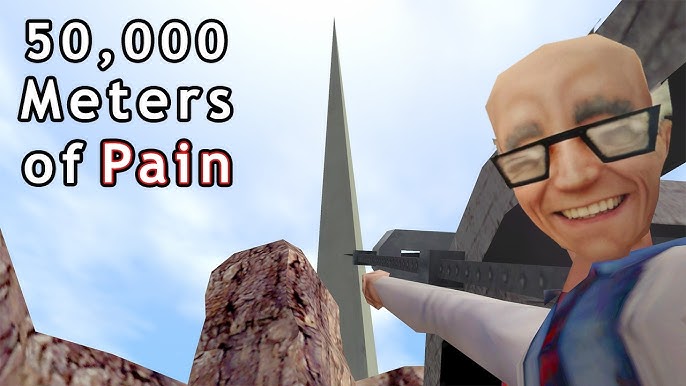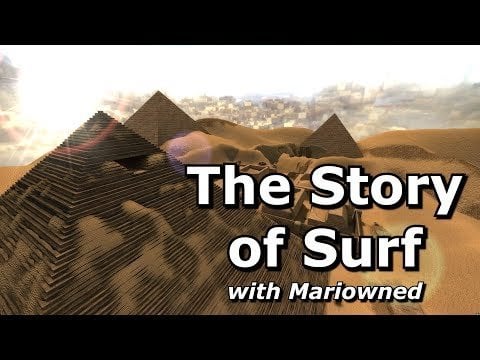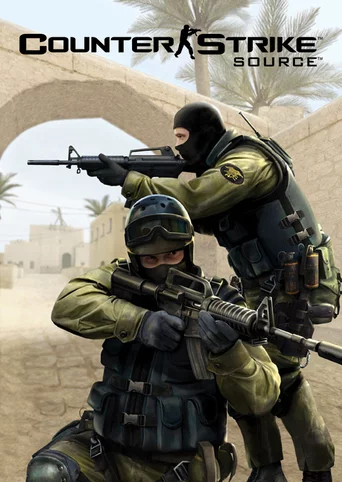The Evolution of Surfing Maps in Counter-Strike: Source: A Level Designer's Perspective Surfing in Counter-Strike: Source wasn’t meant to be a thing.

Surfing in Counter-Strike: Source wasn’t meant to be a thing. The game, fundamentally, is about terrorists versus counter-terrorists, planting bombs, and defusing them. Yet, a vibrant subculture bloomed, centered around meticulously crafted maps devoid of any conventional combat, focusing solely on the art of gliding across angled surfaces. As a level designer and longtime surfer in CSS, I've had a front-row seat to this evolution. From the rudimentary beginnings of maps like "surf_mesa" to the physics-defying trick maps of today, it’s been a wild ride. This is the story of how a glitch became a genre, and how a community transformed a first-person shooter into a movement-based masterpiece. "CS:Source surf maps" have carved their own unique spot in gaming history.
The Genesis of Surfing in CS:S
It all started innocently enough. The Source engine, with its relatively realistic physics, allowed players to gain and maintain momentum on angled surfaces. Someone, somewhere, realized you could string these surfaces together to create a continuous, flowing path. Enter maps like "surf_mesa." These early maps were simple: a series of ramps, usually brightly lit and constructed with basic concrete textures. The goal was straightforward: reach the end. There were no timers, no scores, just the simple satisfaction of mastering the movement. The initial appeal of surfing in Counter-Strike: Source stemmed from its stark contrast to the core gameplay. It was a peaceful, meditative experience that emphasized skill and precision over twitch reflexes and aiming. The physics engine, despite its quirks, provided a surprisingly robust foundation for this emergent gameplay style.
I remember the first time I loaded up "surf_mesa". It felt like discovering a secret room in a game I thought I knew inside and out. There was a certain Zen quality to it, a rhythm to the movement that was strangely captivating. It was also incredibly frustrating. I spent hours trying to make it to the end, constantly falling off and starting over. But the sense of accomplishment when I finally nailed it was immense. That’s when I knew surfing in CS:S was something special. This simplicity appealed to the beginner, but the nuances of getting to the end as quick as possible was difficult to master. This helped bring rise to the many "CSS surf servers."
The Rise of Skill-Based Surfing
As the surf community grew, so did the complexity of the maps. Simple ramps gave way to intricate networks of curves, jumps, and obstacles. Maps like "surf_utopia" exemplified this trend. These maps were no longer just about reaching the end; they were about mastering a series of increasingly difficult challenges. Staged runs, where players had to complete a sequence of sections in a specific order, became common. Timers and scoreboards added a competitive element, driving players to push their skills to the limit. "CSS surf beginner maps" were still available, but the community was pushing the boundaries of what was possible.

Designing these maps was a constant balancing act. You wanted to create challenges that were difficult but not impossible, rewarding for skilled players but not discouraging for newcomers. I spent countless hours tweaking ramp angles, adjusting jump distances, and playtesting to ensure the flow felt just right. One of the biggest challenges was preventing players from cheesing the maps. We tried to anticipate every possible exploit, but the community was always one step ahead. This constant cat-and-mouse game between map designers and players led to some truly inventive uses of the Source engine's physics. Surfing became more competitive in these times as "CS:Source surf records" began to be more sought after.
The Discovery of Physics Exploits
The turning point in the evolution of surfing came with the discovery and refinement of physics exploits. Techniques like wall bouncing and, most notably, Accelerated Back Hopping (ABH), completely changed the game. ABH, in particular, allowed players to achieve speeds that were previously unimaginable. This opened up a whole new dimension of map design. Suddenly, we could create maps that required not just skill, but a deep understanding of the Source engine's inner workings.

Learning ABH was like unlocking a secret level in Counter-Strike: Source. It required precise timing, coordinated movements, and a whole lot of practice. But once you mastered it, you could fly across maps with incredible speed and agility. It also broke a lot of maps. Suddenly, sections that were designed to be challenging were easily bypassed with a well-executed ABH jump. As level designers, we had to adapt. We started designing maps specifically with ABH in mind, creating challenges that required players to utilize this technique to its full potential. A "CS:Source surf map tutorial" would be highly useful at this point.
The Era of Trick Surfing
The advent of physics exploits paved the way for the era of trick surfing. Maps designed for trick surfing emphasized creative movement, exploration, and stylish maneuvers. Complex geometry, multiple pathways, and hidden areas became commonplace. Maps like "surf_kitsune" and "surf_forbidden" became synonymous with trick surfing. These maps weren't just about getting from point A to point B; they were about expressing yourself through movement.

Designing trick surf maps was a completely different challenge than designing skill-based maps. You had to think about how players would interact with the environment in unexpected ways. You had to create opportunities for creativity and self-expression. This often involved a lot of experimentation and iteration. I remember spending hours on "surf_kitsune," trying to create a series of interconnected pathways that would allow players to string together a seamless flow of tricks. The goal was to create a map that felt both challenging and rewarding, a place where players could push their limits and discover new possibilities.
The Impact of Community and Competition
The evolution of surf maps in Counter-Strike: Source wouldn't have been possible without the dedication and passion of the surf community. Online forums, like the image shows, became hubs for sharing maps, techniques, and tips. Prominent figures emerged, pushing the boundaries of map design and surfing techniques. Record attempts and speedruns became a major driving force, inspiring map creators to design increasingly challenging and innovative maps. This is where the "CSS surf community" was most active.

I remember attending a small LAN event dedicated to surfing. It was amazing to see the community come together in person, sharing their passion for the game and pushing each other to improve. The atmosphere was electric, with players constantly discovering new tricks and techniques. It was a testament to the power of community and competition in driving innovation. This sense of community fostered creativity in "surf map design CSS".
The Legacy and Future of Surfing
The legacy of surfing in Counter-Strike: Source extends far beyond the game itself. The surfing mechanic and map design principles have been incorporated into other titles and game modes. The focus on movement and skill has influenced level design in various genres. Surf maps also helped create new innovations in the Garry's Mod Roleplay, Team Fortress 2 item economies, and Portal 2 co-op puzzles. Surfing's influence can be seen in games like Titanfall and Apex Legends, where movement is a core component of the gameplay experience.

Even today, years after Counter-Strike: Source's prime, the surf community remains active. New maps are still being created, new techniques are still being discovered, and the spirit of innovation continues to thrive. As for the future, it is hard to say where surfing will go. The community is always looking for new ways to challenge themselves and push the boundaries of what's possible. If you are just starting now and are wondering "How to surf in Counter-Strike: Source" you'll be in good company with people that have been playing for over a decade.
Conclusion: A Serendipitous Subculture
From its humble beginnings as a physics curiosity to its current status as a thriving subculture, surfing in Counter-Strike: Source has been a remarkable journey. It's a testament to the power of community, the ingenuity of players, and the enduring appeal of movement-based gameplay. As a level designer who has witnessed and contributed to this evolution, I can say with certainty that surfing is more than just a game mode; it's an art form.
Ready to experience the thrill of surfing in Counter-Strike: Source? Find a "CSS surf server" and start your journey today. Explore the maps, learn the techniques, and become part of a community that celebrates creativity, skill, and the joy of defying gravity. Whether you're a beginner or an experienced surfer, there's always something new to discover in this endlessly fascinating world. Find CS:Source servers here.